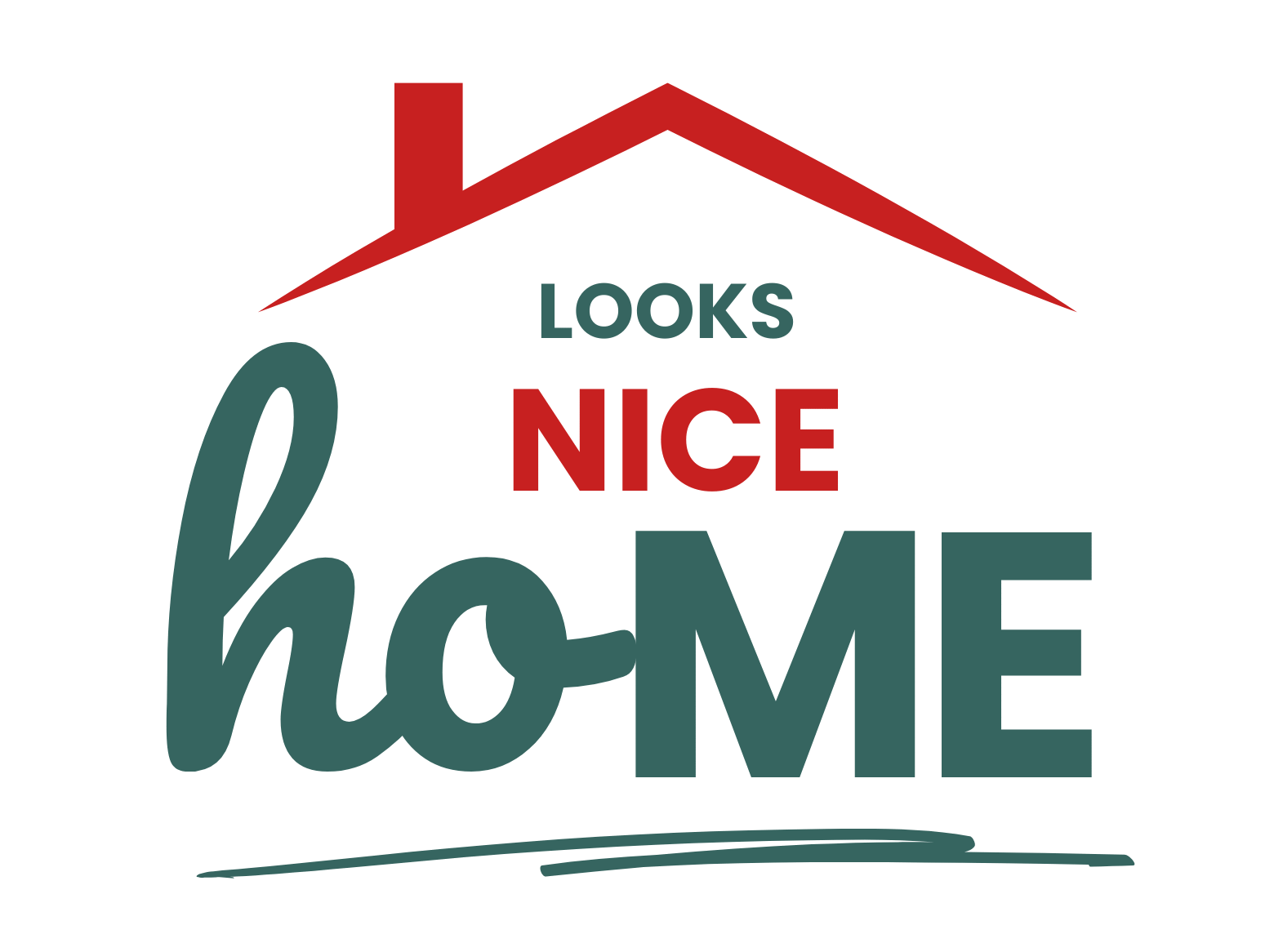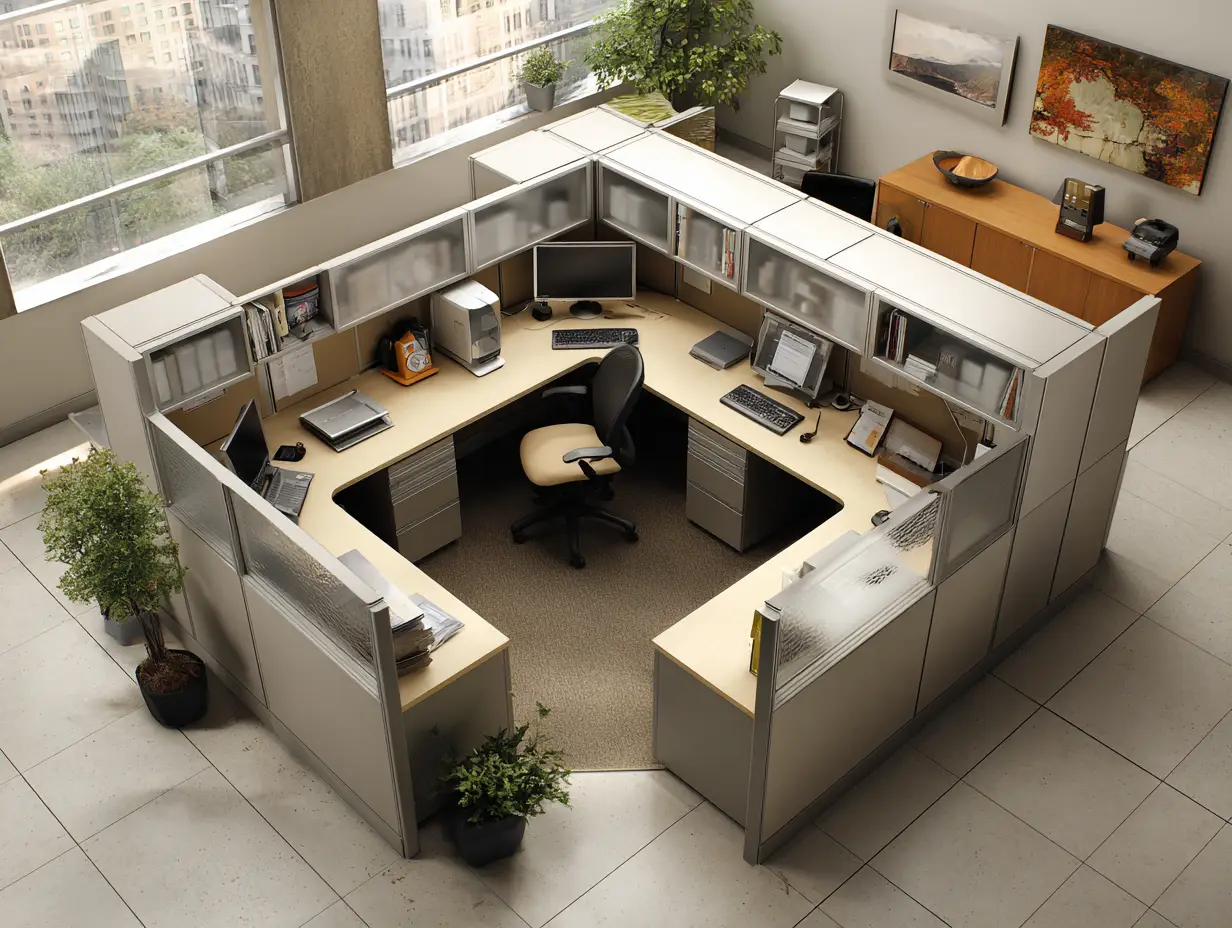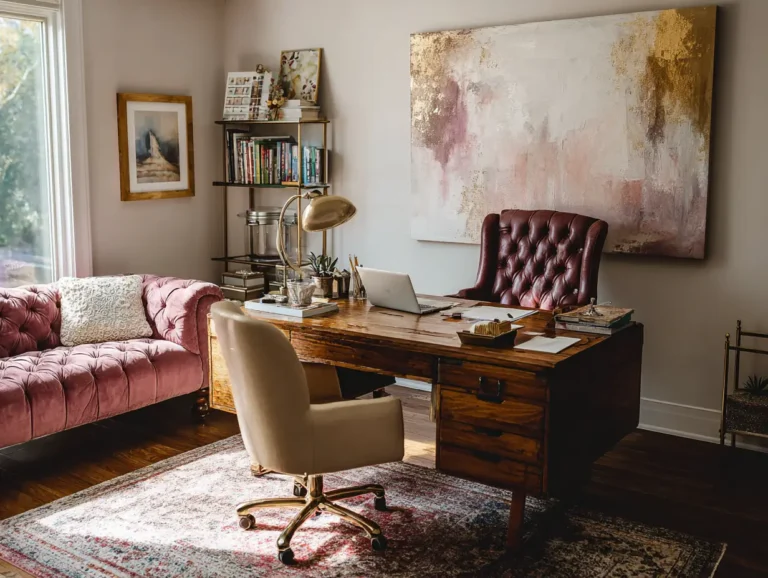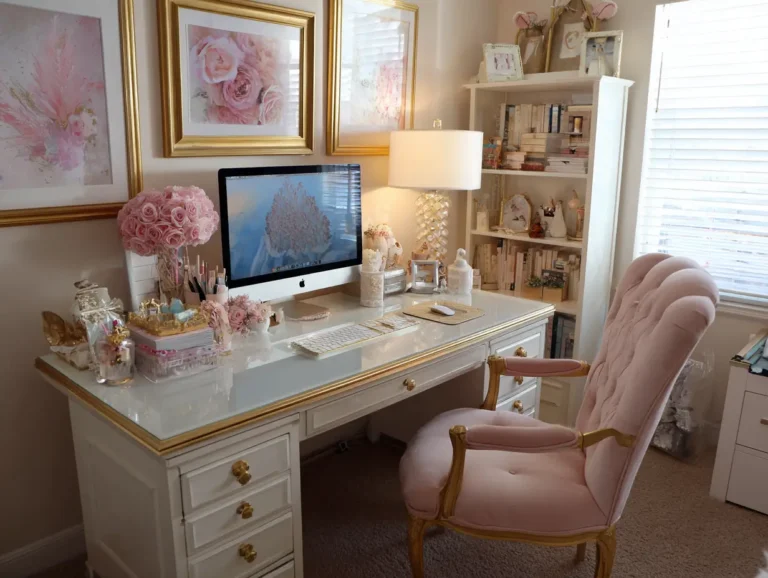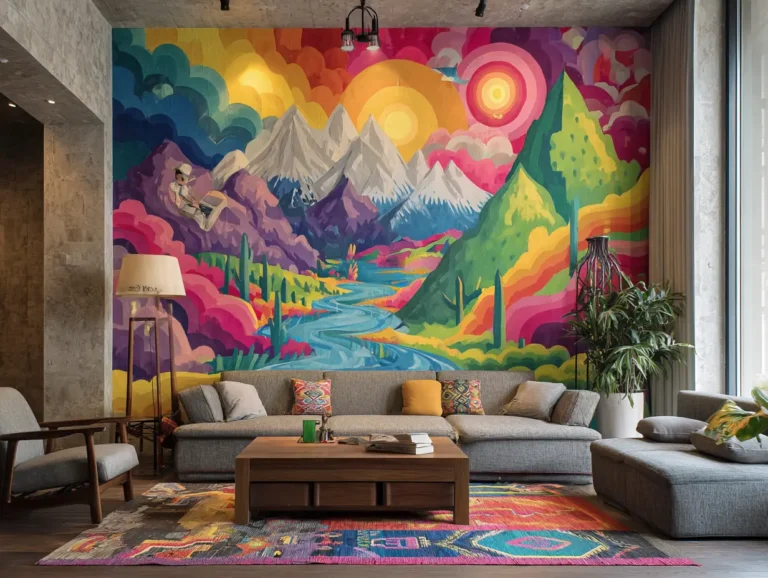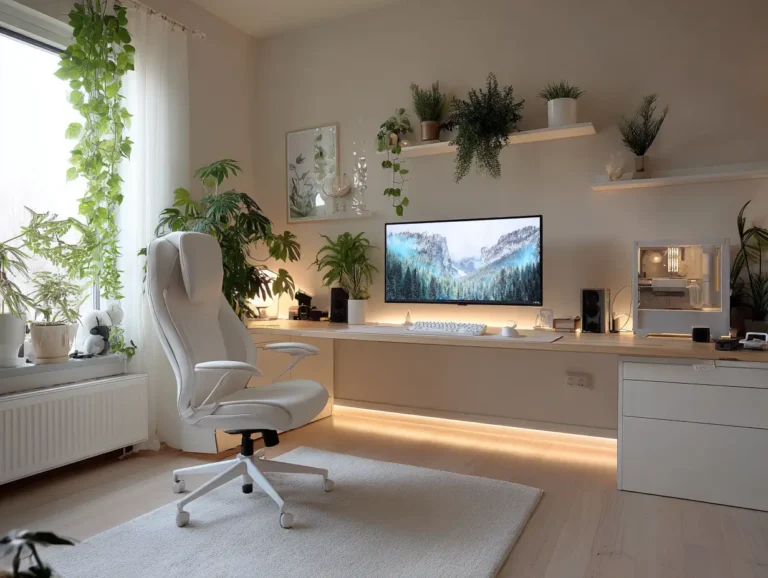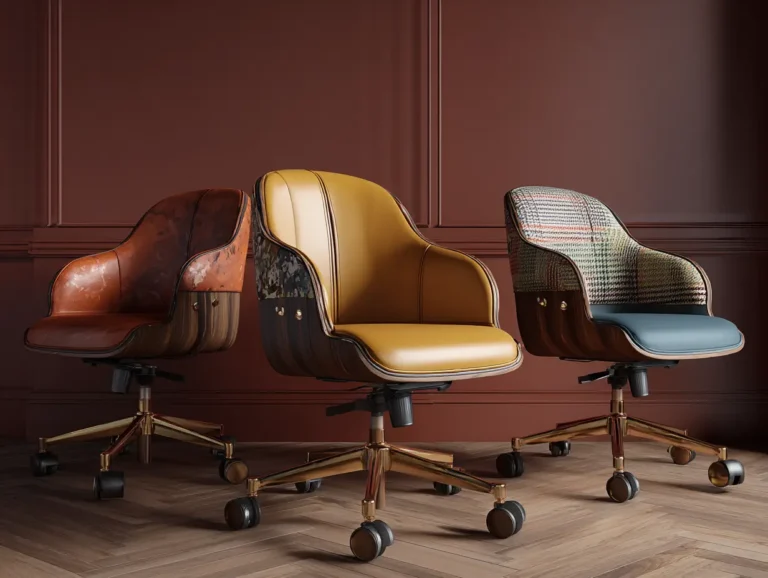15 Small Office Layouts for Tight Spaces
Living in a compact home doesn’t mean you have to sacrifice productivity or style. In today’s work-from-home era, having a dedicated workspace is essential—but not everyone has a spare room to convert into an office. The good news? Even the tiniest nook can be transformed into a functional and inspiring work zone with the right layout and design.
Whether you’re carving out a corner in your living room, converting a closet, or setting up under the stairs, this guide offers 15 space-smart small office layouts. Each idea blends smart design principles, current trends, and practical tips to help you create a stylish home office that works as hard as you do.
1. The Floating Desk Nook
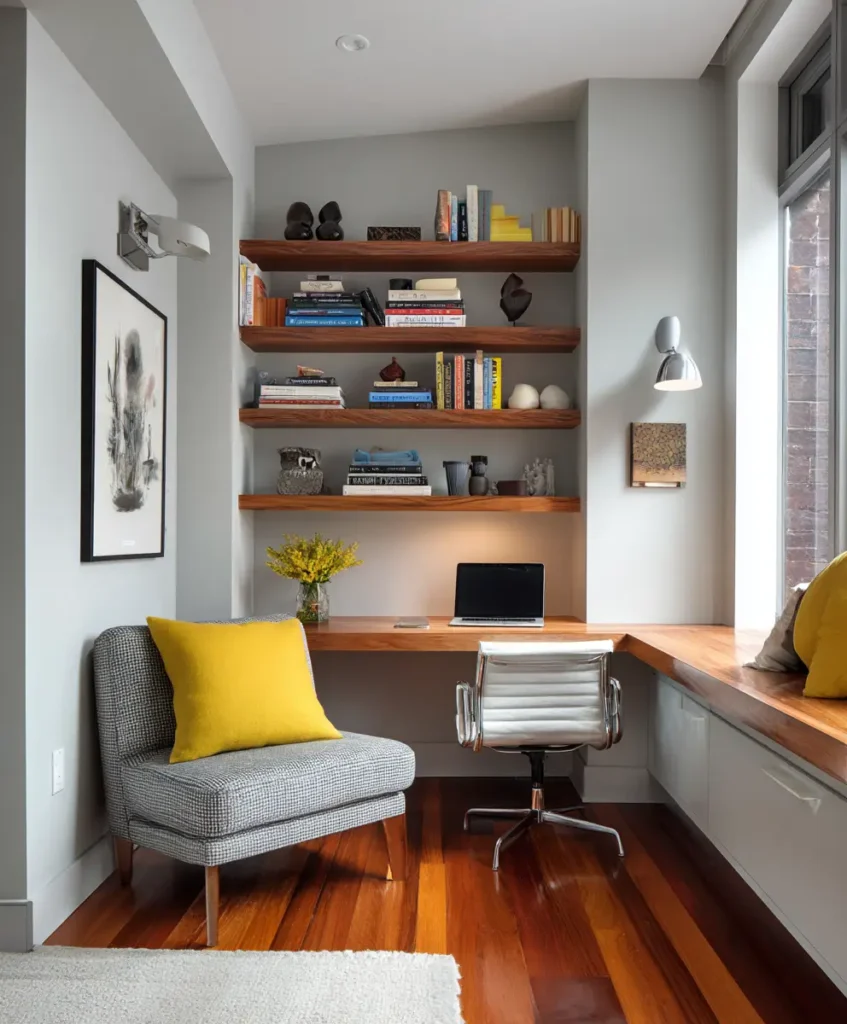
Maximize wall space by installing a floating desk with wall-mounted storage above. This layout keeps your floor clear, making even the smallest corner feel open and light.
Pro Tip: Pair it with a backless stool you can tuck away when not in use. Example: A minimalist white floating desk with gold hardware in a bedroom corner.
2. Window Workstation
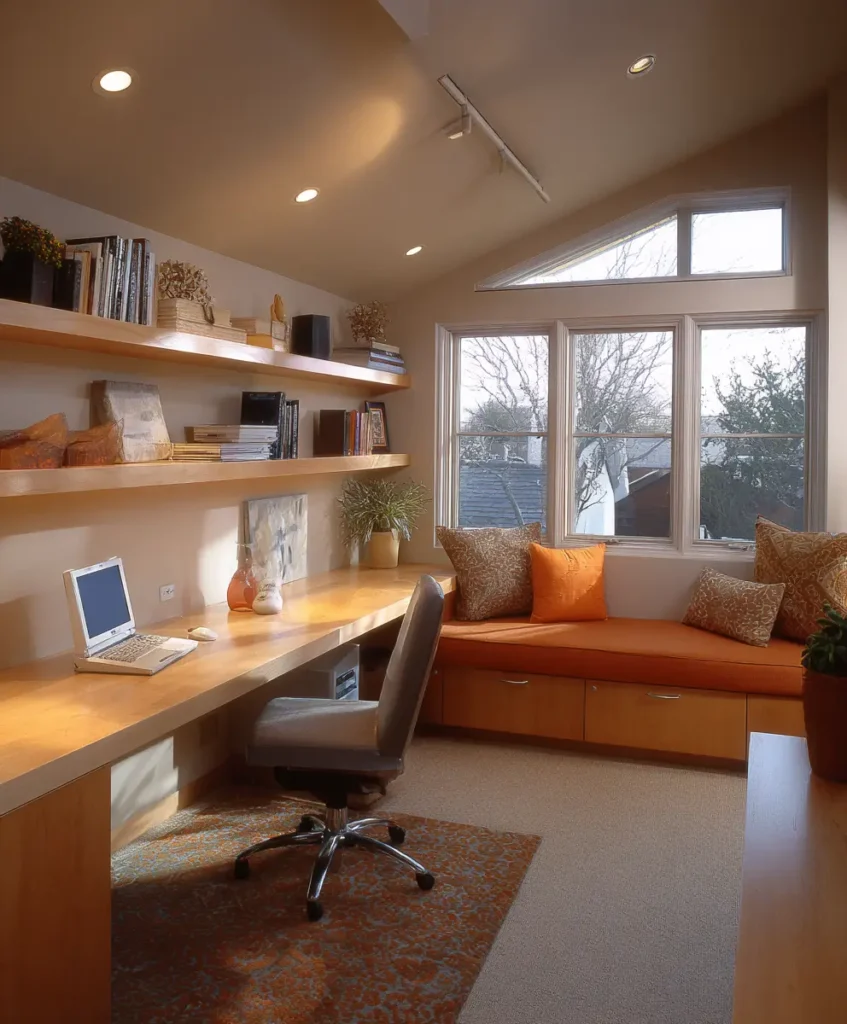
Turn a window area into a light-filled workspace. Natural light boosts mood and productivity, while the view prevents eye strain.
Pro Tip: Use sheer curtains to maintain light and privacy. Example: A slim desk under a sunny bay window with a view of the garden.
3. Closet Office (“Cloffice”)
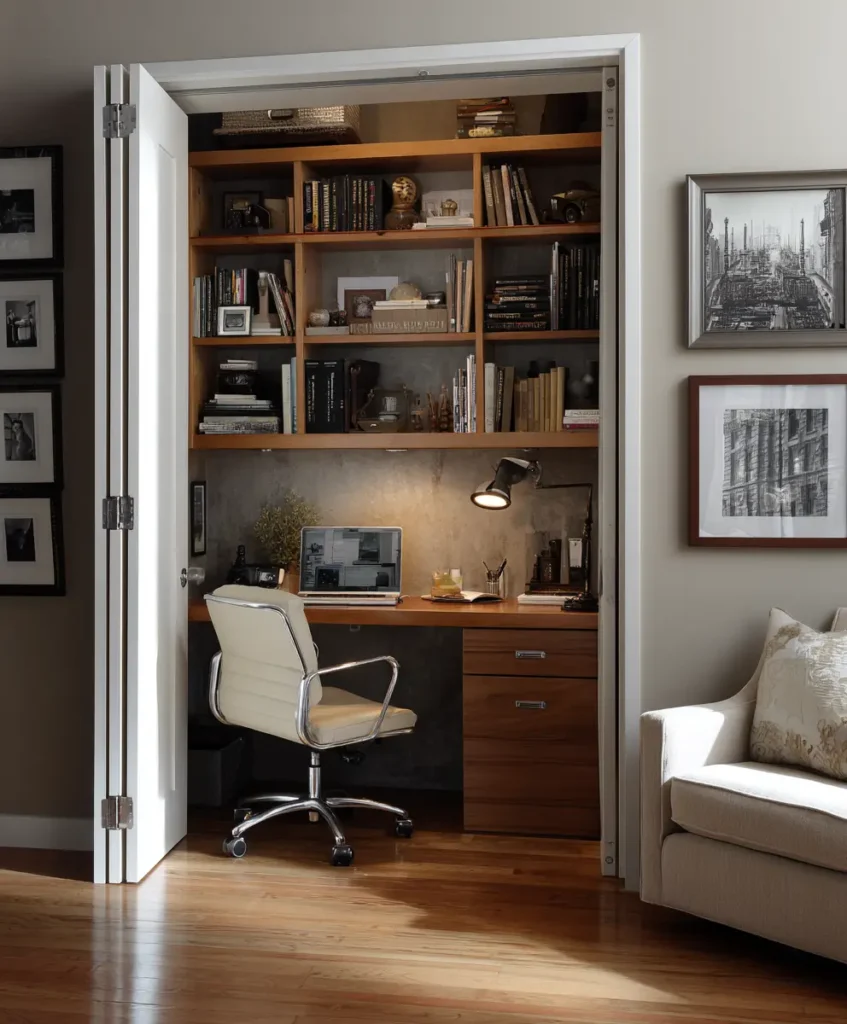
Transform a rarely used closet into a compact office. Remove the doors, add a custom-fit desk and shelves, and paint the inside a bold color.
Pro Tip: Add puck lights or LED strips for focused task lighting.
4. Corner Command Center
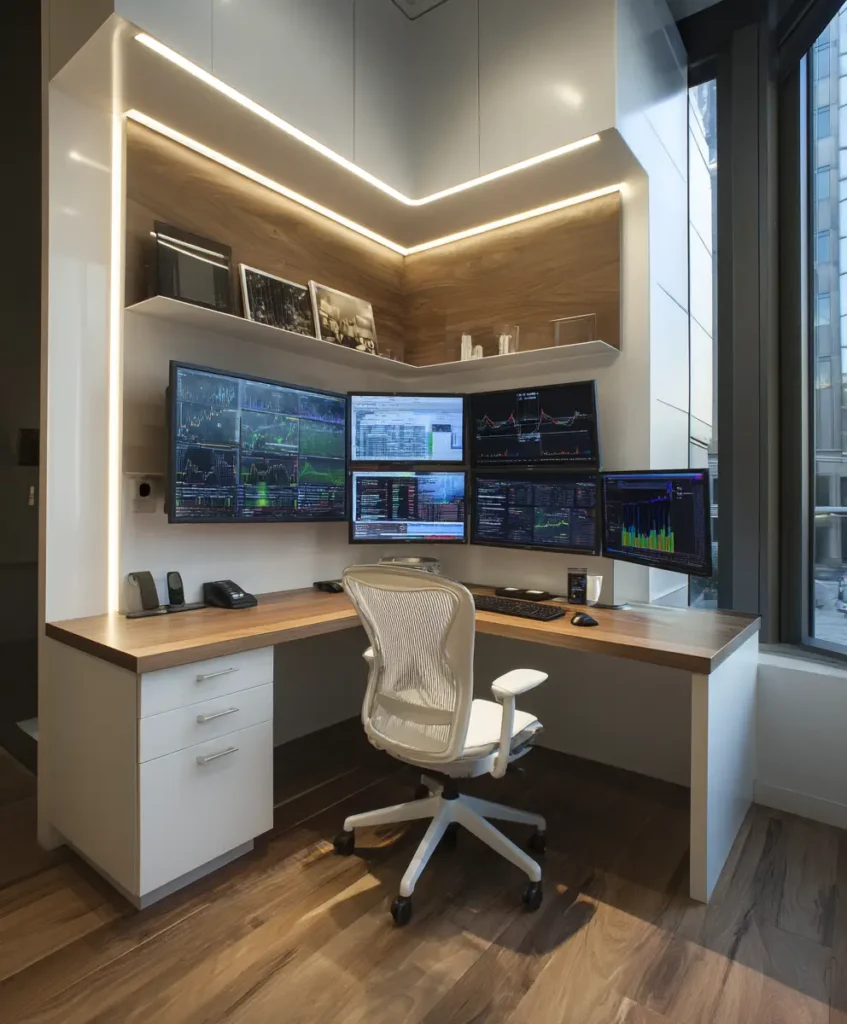
Use an L-shaped desk to make the most of an empty corner. It provides ample surface area without encroaching on open floor space.
Pro Tip: Keep upper shelving light and open to avoid a cluttered feel.
5. Under-the-Stairs Study Zone
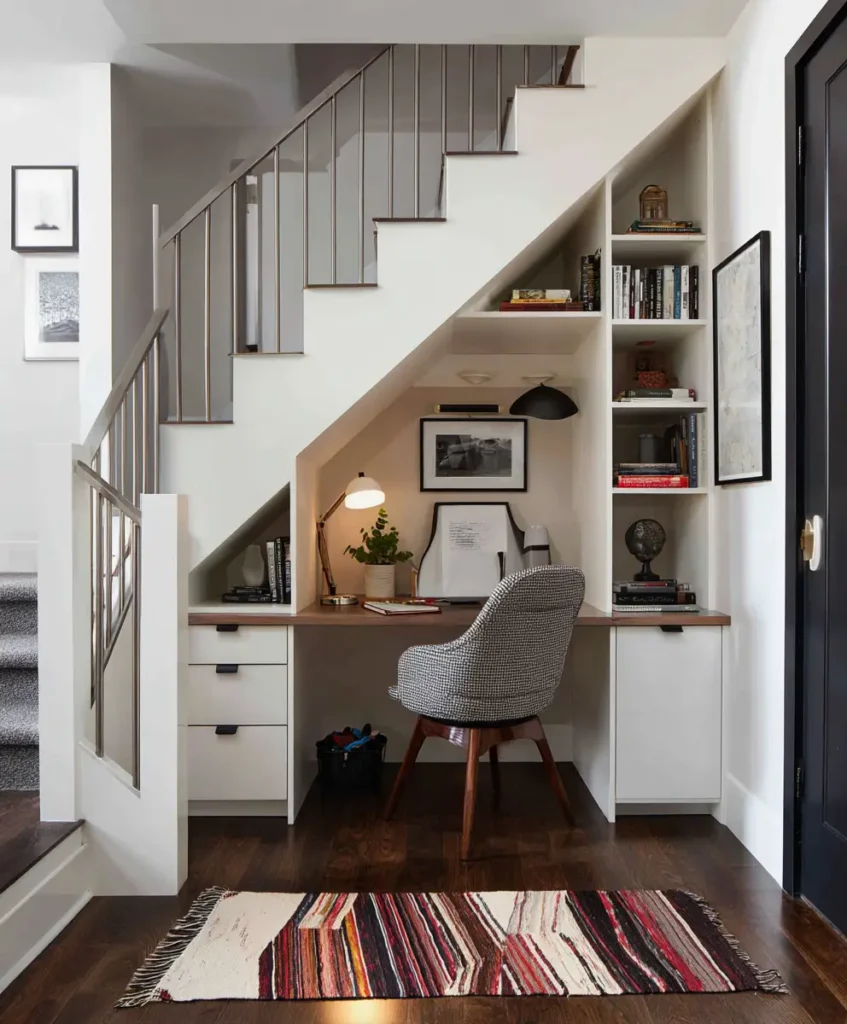
Unutilized space under stairs can become a tucked-away office. Built-in drawers and cabinets keep it functional and neat.
Pro Tip: Add a small area rug to define the zone and dampen noise.
6. Wall-to-Wall Desk
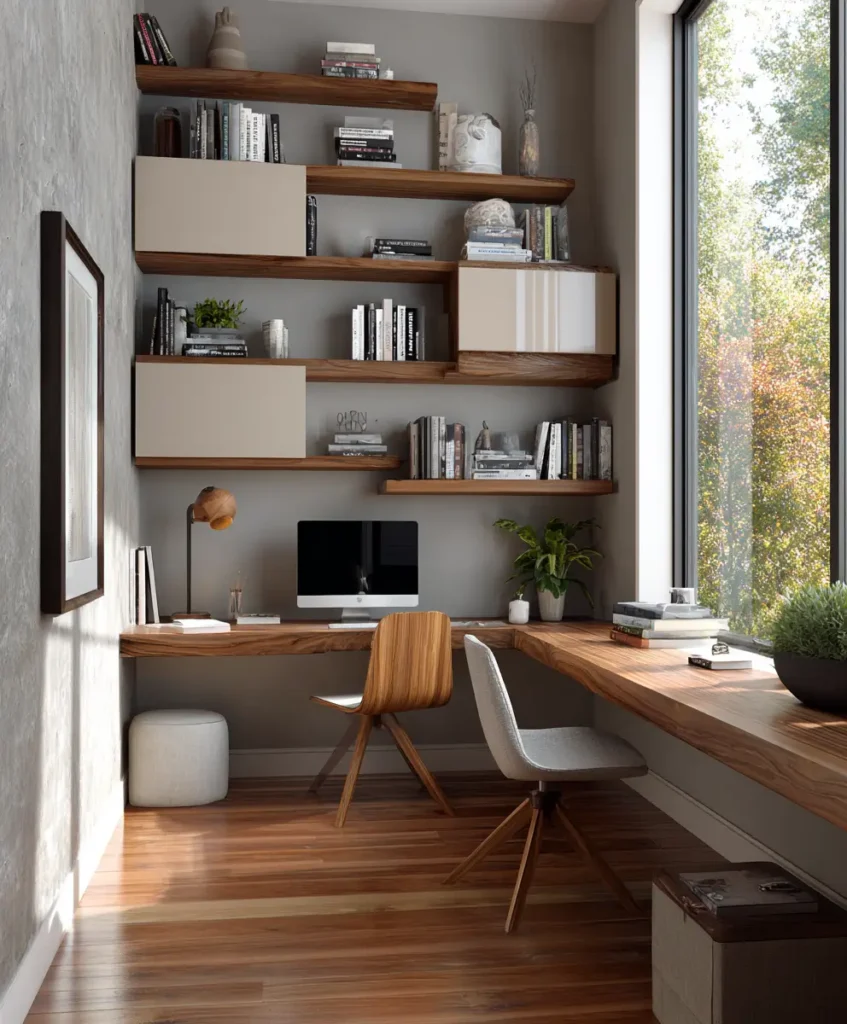
In narrow rooms, a wall-to-wall desk creates the illusion of a custom-built piece and offers a generous work surface.
Pro Tip: Use matching floating shelves above for a cohesive, clean look.
7. Built-In Bookshelf Office
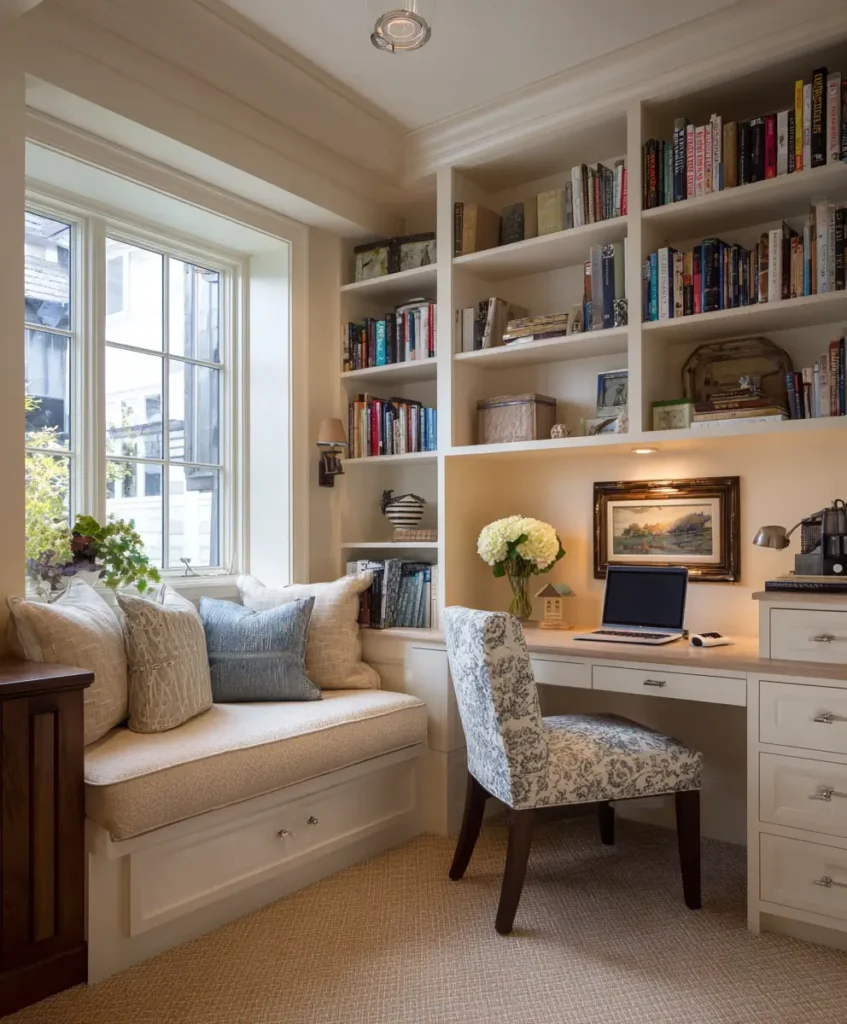
Combine your love of reading and working by integrating your desk into a floor-to-ceiling bookshelf.
Pro Tip: Place the desk at the center of the bookshelf for symmetry and balance.
8. Fold-Down Murphy Desk
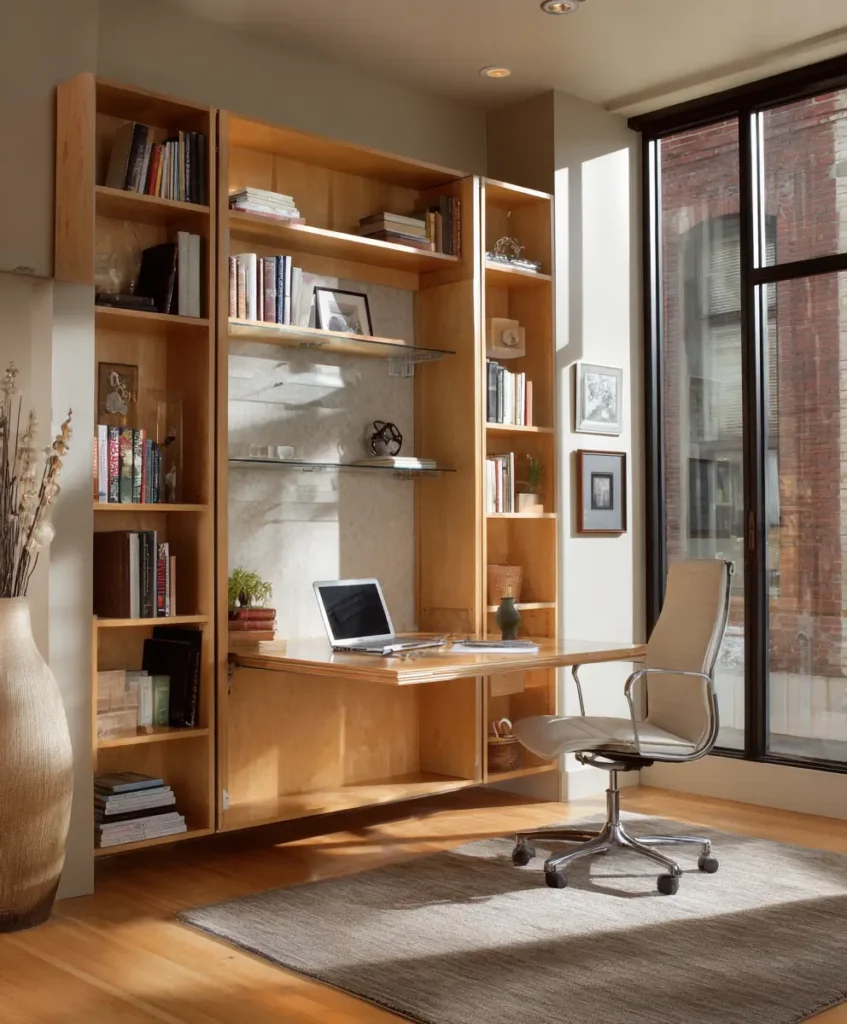
A wall-mounted desk that folds down when needed is ideal for micro-apartments or multipurpose rooms.
Pro Tip: Look for versions with built-in storage compartments for office supplies.
9. Hallway Office Alcove
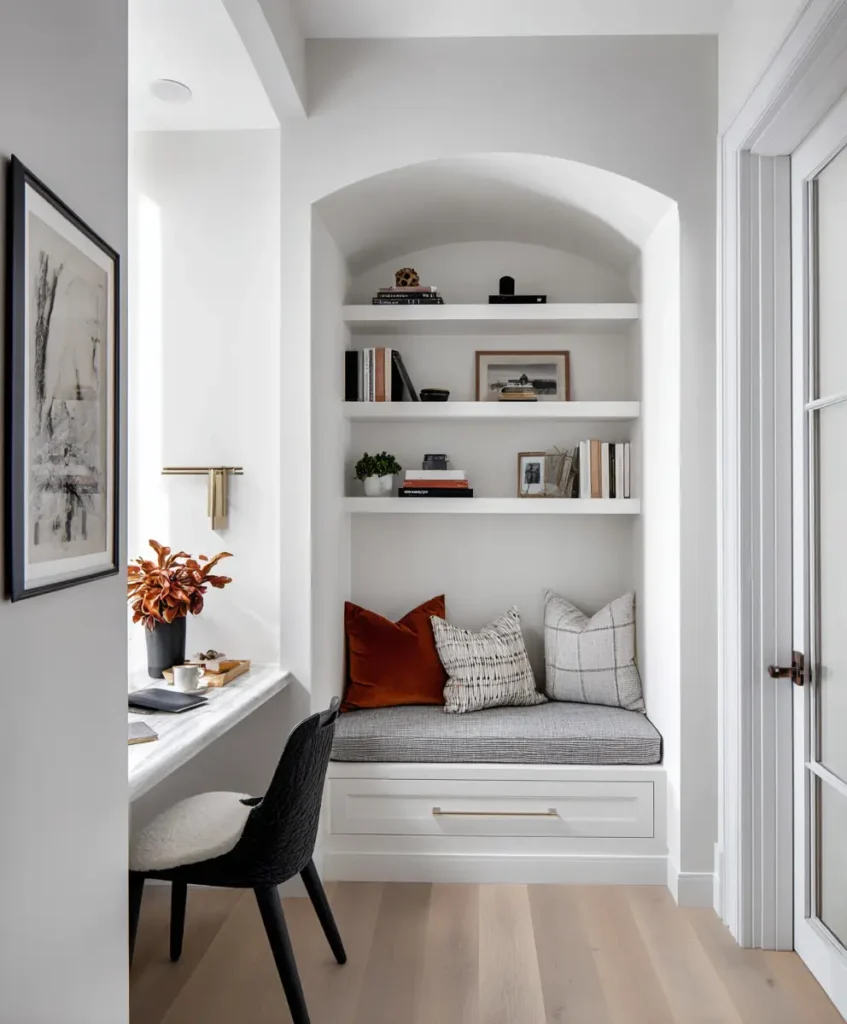
A wide hallway or open wall niche can fit a narrow desk and chair. Keep it minimal to maintain flow.
Pro Tip: Hang a mirror nearby to visually expand the space.
10. Bedroom Office Divider
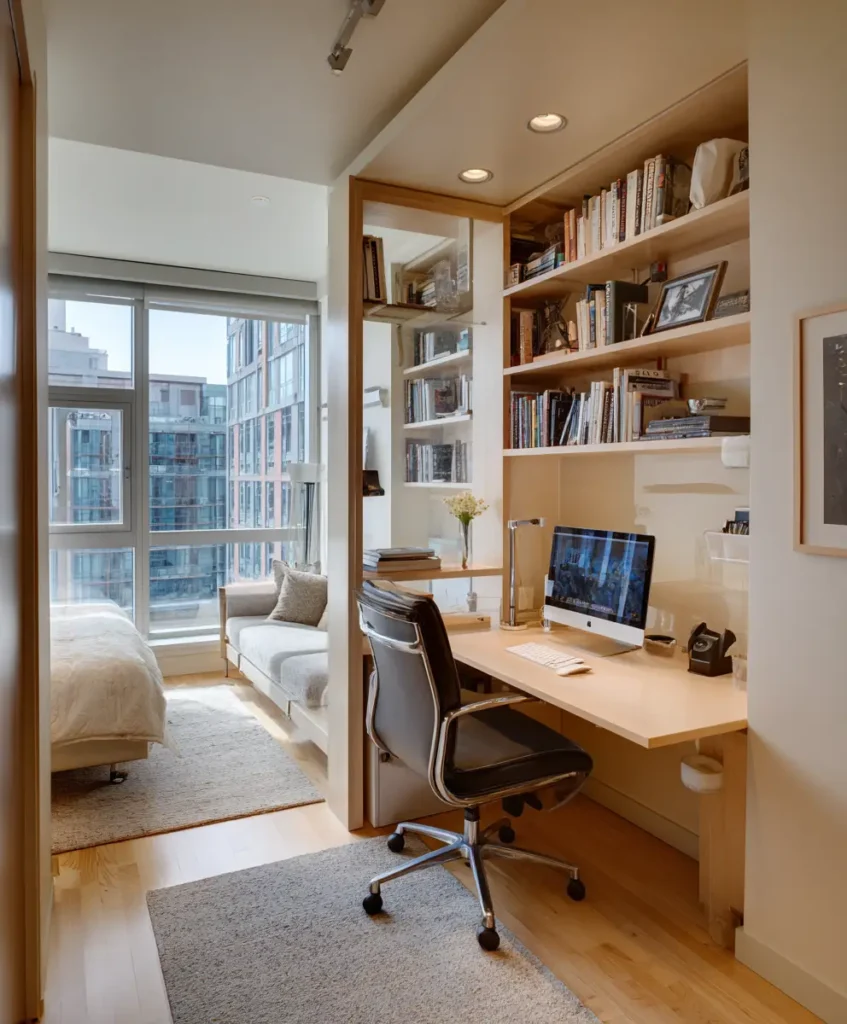
Place a small desk behind your bed’s headboard or use a screen divider to zone a workspace in your bedroom.
Pro Tip: Choose quiet, calming colors to reduce visual distractions.
11. Compact Corner Desk + Tall Shelves
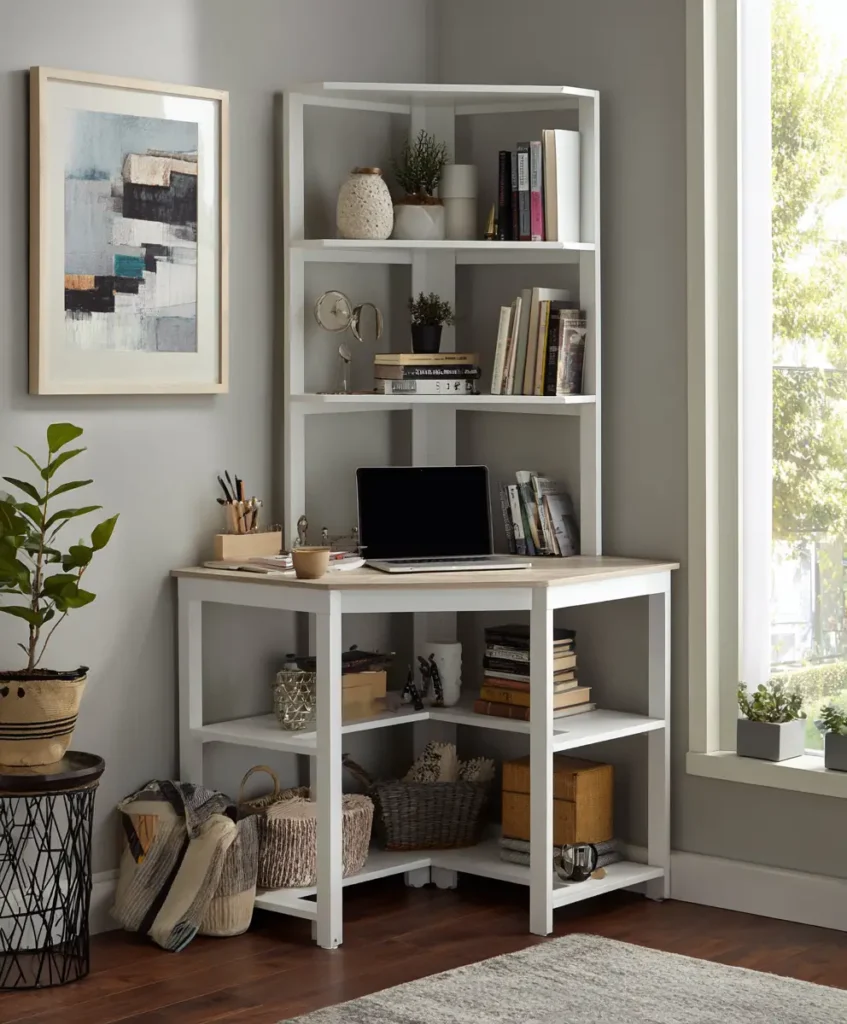
Use vertical space with a tall bookcase next to a compact desk. This layout balances storage and functionality.
Pro Tip: Use matching baskets on upper shelves to keep clutter hidden.
12. Kitchen Office Station
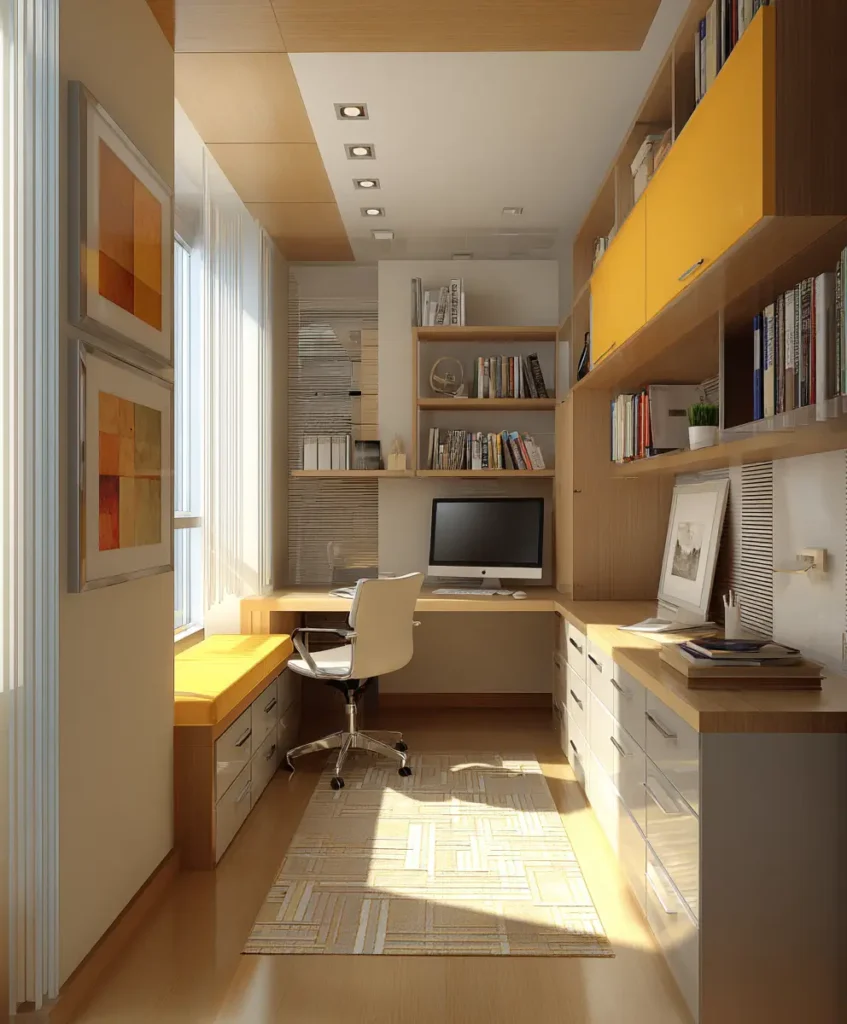
Convert part of a kitchen counter or nook into a desk. Ideal for managing bills, meal plans, or quick laptop sessions.
Pro Tip: Choose water-resistant surfaces and tuck tech cords away safely.
13. Hidden Cabinet Desk
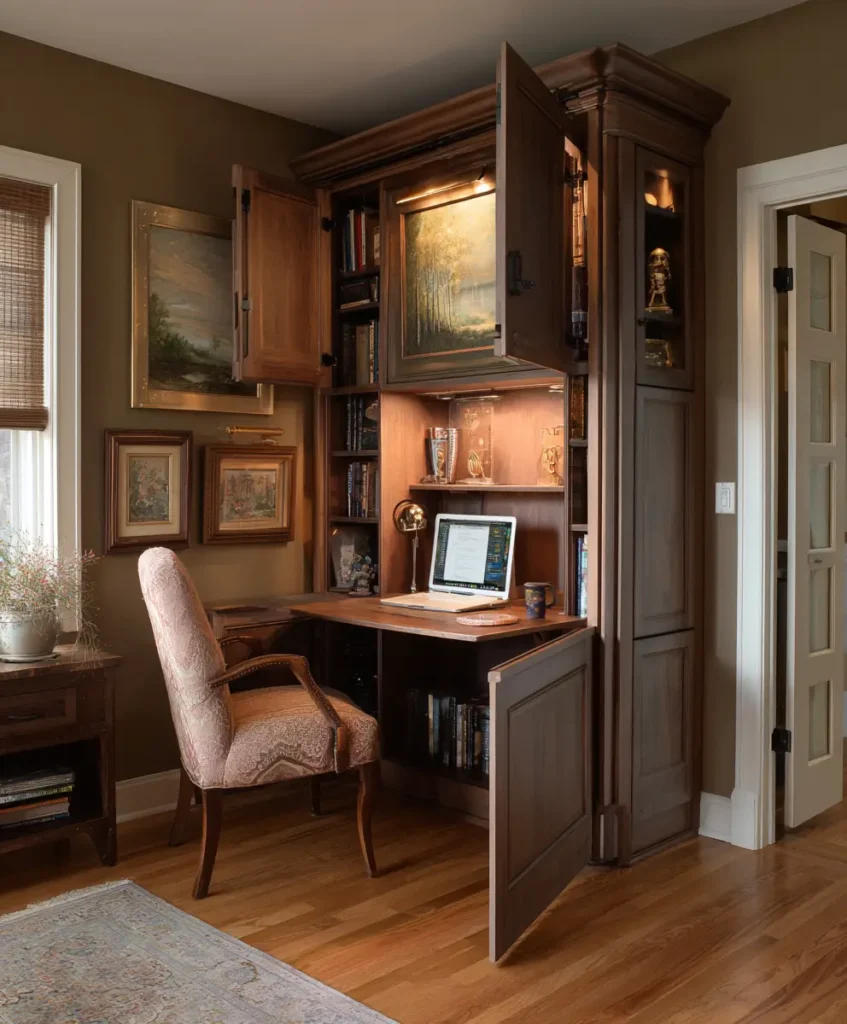
Use a fold-out desk cabinet that closes into a stylish armoire when not in use. Perfect for open-concept living areas.
Pro Tip: Opt for a design with built-in USB ports or cable management features.
14. Dual-Purpose Dining Table
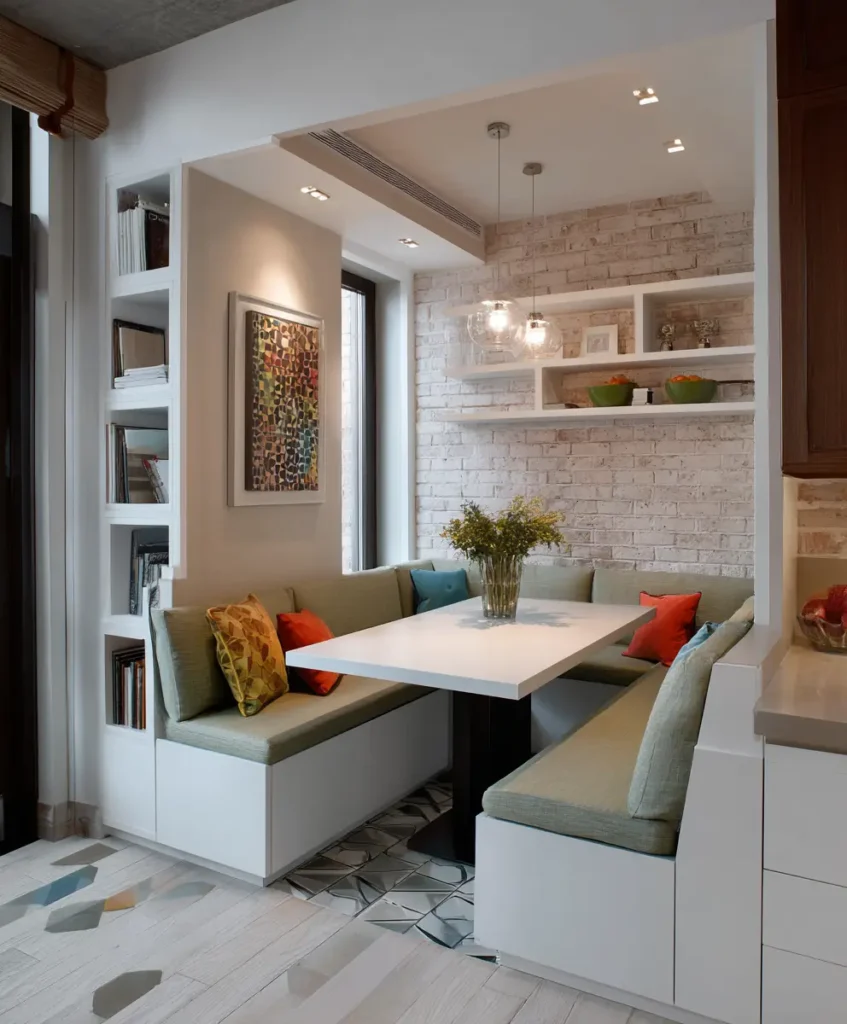
For studio apartments, a slim dining table can double as your desk.
Pro Tip: Keep a small caddy or drawer unit nearby to store work supplies when it’s time for dinner.
15. Lofted Desk Above Storage
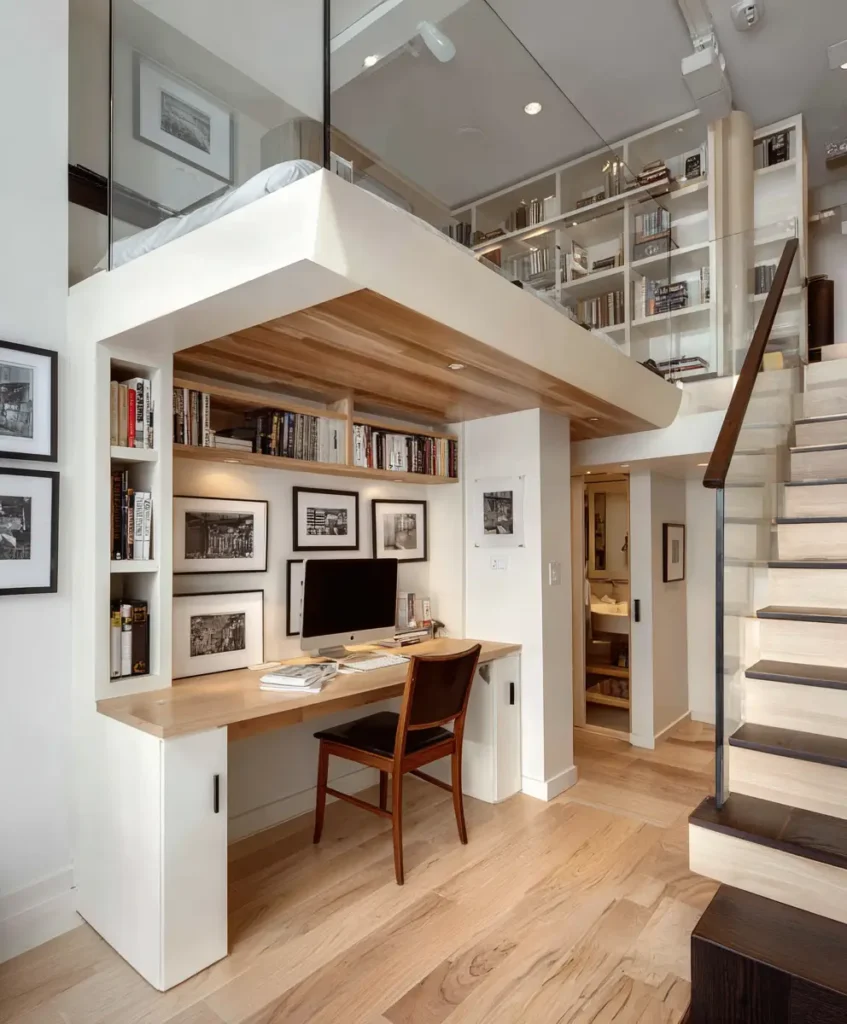
Elevate your desk slightly above built-in cabinets or storage units, creating two functions in one footprint.
Pro Tip: Use soft-close drawers to reduce noise and keep the area serene.
Final Thoughts
Designing a small office space doesn’t mean settling for less—it’s about using every square inch with intention. With the right layout, you can have a functional, stylish home office that sparks creativity and supports your goals.
Which of these ideas inspired you the most? Tell us in the comments—we’d love to hear about your favorite layouts and transformations!
